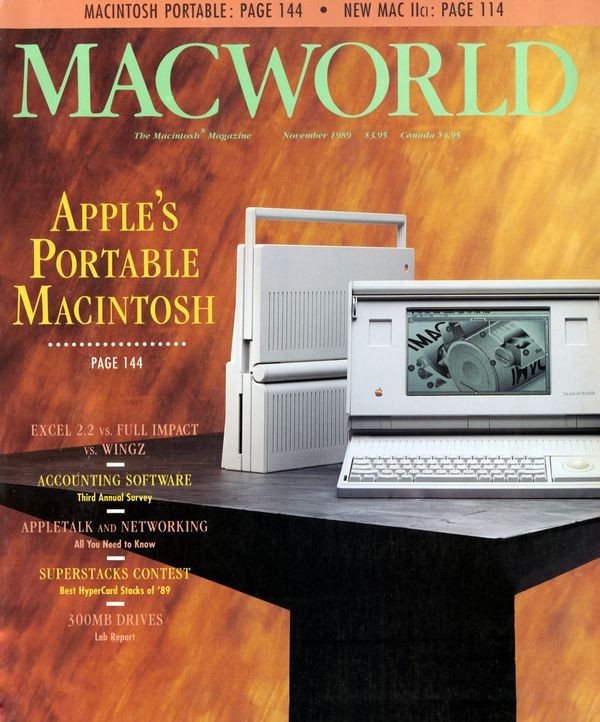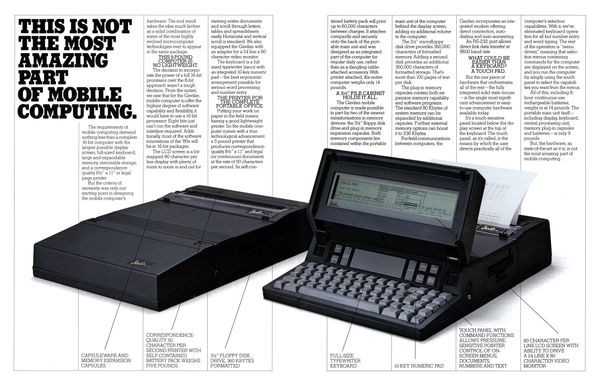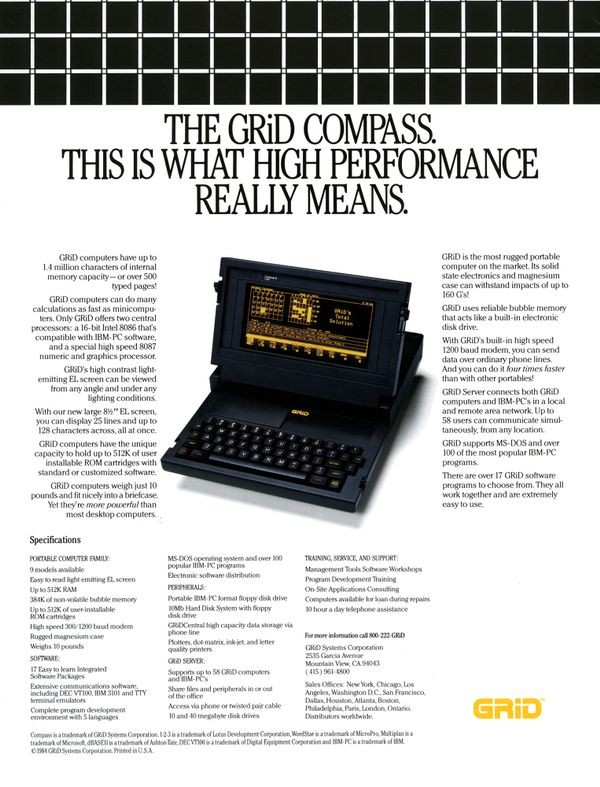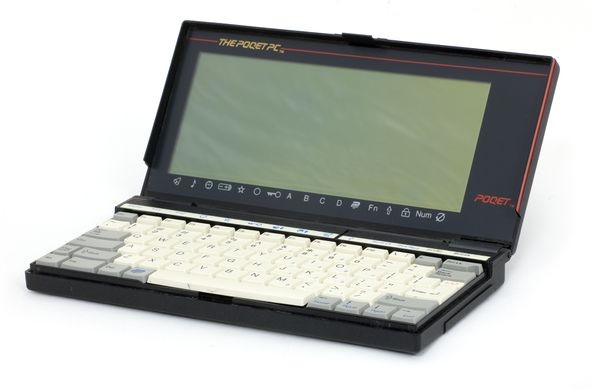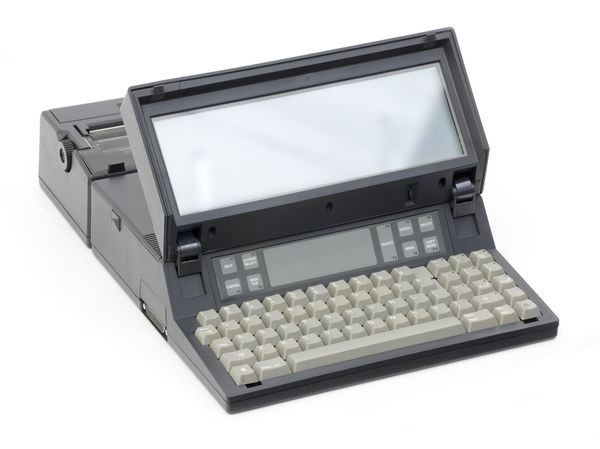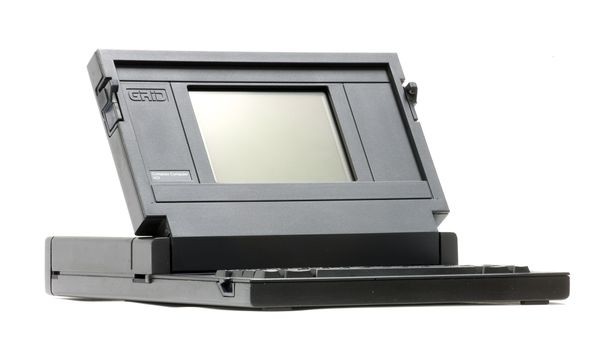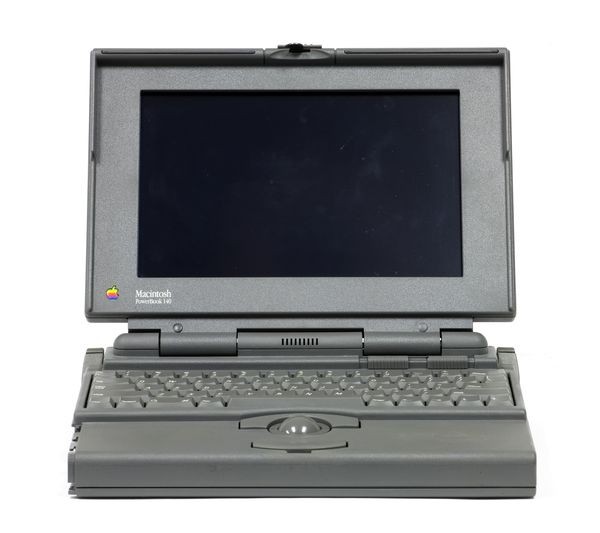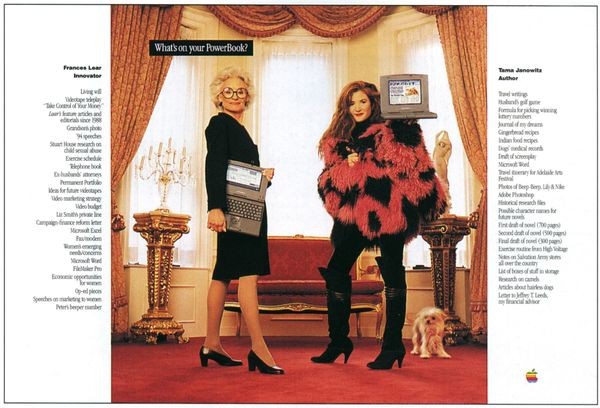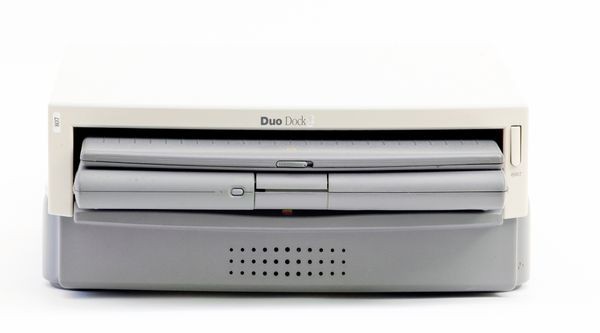Laptops Emerge
Macintosh Portable
The Mac Portable was long anticipated because Apple’s competitors had offered laptops for years. But it was too expensive ($6,500), too heavy (16 pounds) and was a spectacular failure.
Laptops Emerge
Luggables offered complete computing. Flat-tops were affordable and lightweight. By 1982, some of the best features of both had merged into the familiar laptop form.
Though not as light or as inexpensive as flat-tops, laptops ran standard desktop computer programs. And they added an innovative new ingredient: large screens hinged to cover the keyboard, reducing overall size and providing protection while offering a usable display for serious work.
Within a dozen years, as laptops became increasingly powerful and affordable, they evolved from specialty machines to everyday tools.
Gavilan advertisement
The full-featured Gavilan was billed as a desktop PC replacement, with optional portable printer. Innovations included the trackpad (uncommon until a decade later), and a graphical interface running on top of a partly PC-compatible version of MS-DOS.
View Artifact DetailGRiD advertisement
At a demonstration, GRiD’s CEO John Ellenby had his Compass flat on the table in front of him. Adam Osborne and other presenters didn’t realize it was a computer until he opened it.
View Artifact DetailPoqet PC subnotebook
“Subnotebooks” or “Palmtops” such as the 1988 Poqet PC were an awkward, in-between size: bigger than a handheld and smaller than a laptop. They didn't take off until the netbooks of the 2000s.
View Artifact DetailGavilan mobile computer
The Gavilan was an early “clamshell” battery-powered laptop with a hinged screen that covered the keyboard when not in use. It ran Microsoft’s MS-DOS operating system, but it was only partly compatible with the IBM PC.
View Artifact DetailGRiD Compass laptop
The sleek, pricey Compass was the most successful early clamshell-style laptop. For years the company earned royalties on their design. The first versions didn’t have batteries, and were aimed at a larger “grid” vision of networked business services.
View Artifact DetailGood Design, Good Looks…Good Business!
Laptops were created to be useful. Smart design eventually made them fashionable, transforming workday tools into chic, coveted consumer items.
Apple’s PowerBook series helped lead the way, marrying innovative ideas with the Macintosh operating system. It pioneered placing the trackball or trackpad in front of the keyboard, leaving space on either side to rest one’s wrists so that people could indeed use laptops on their laps. This concept was adopted almost universally.
IBM’s matte black ThinkPad series mixed elegant styling with another interface first, the Trackpoint joystick.
Powerbook 140
The Powerbook was the first successful laptop version of Apple’s famous Macintosh computer. It overtook Compaq and Toshiba to lead the portable market, and made over $1 billion in first-year sales. Its sleek design influenced many later laptops.
View Artifact DetailPowerbook advertisement
Powerbook advertising portrayed all sorts of users, not just technical and business types. The Powerbook line went from the 100 (soon replaced by the Duo) up to the desktop-replacement Powerbook 180.
View Artifact DetailThinkPad 701 with butterfly keyboard
The ThinkPad’s success established a durable brand that was later sold to Lenovo in China. The expanding keyboard was a design triumph, but was soon made unnecessary by wider computers designed around larger screens.
View Artifact DetailApple Duo laptop with dock
The Duo was smaller and lighter than the flagship Powerbook, and had fewer connectors. Sliding it into the docking station made it the heart of a desktop system with connections to a keyboard, mouse, monitor, printer and more.
View Artifact Detail